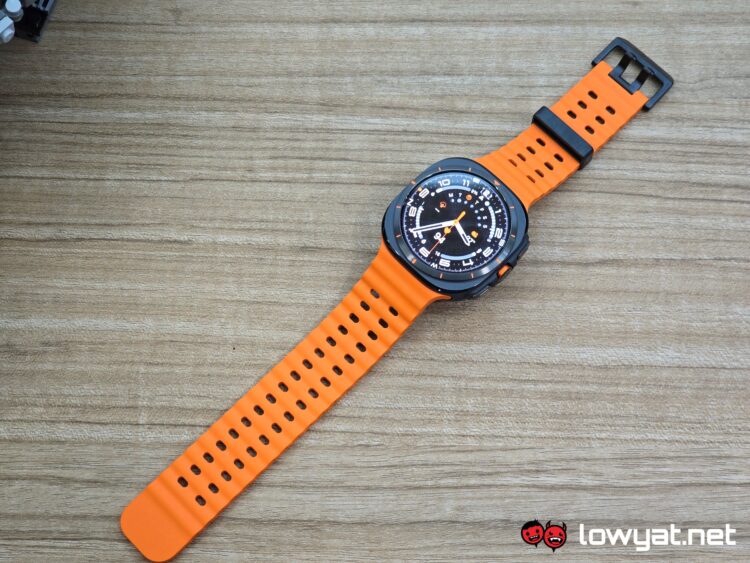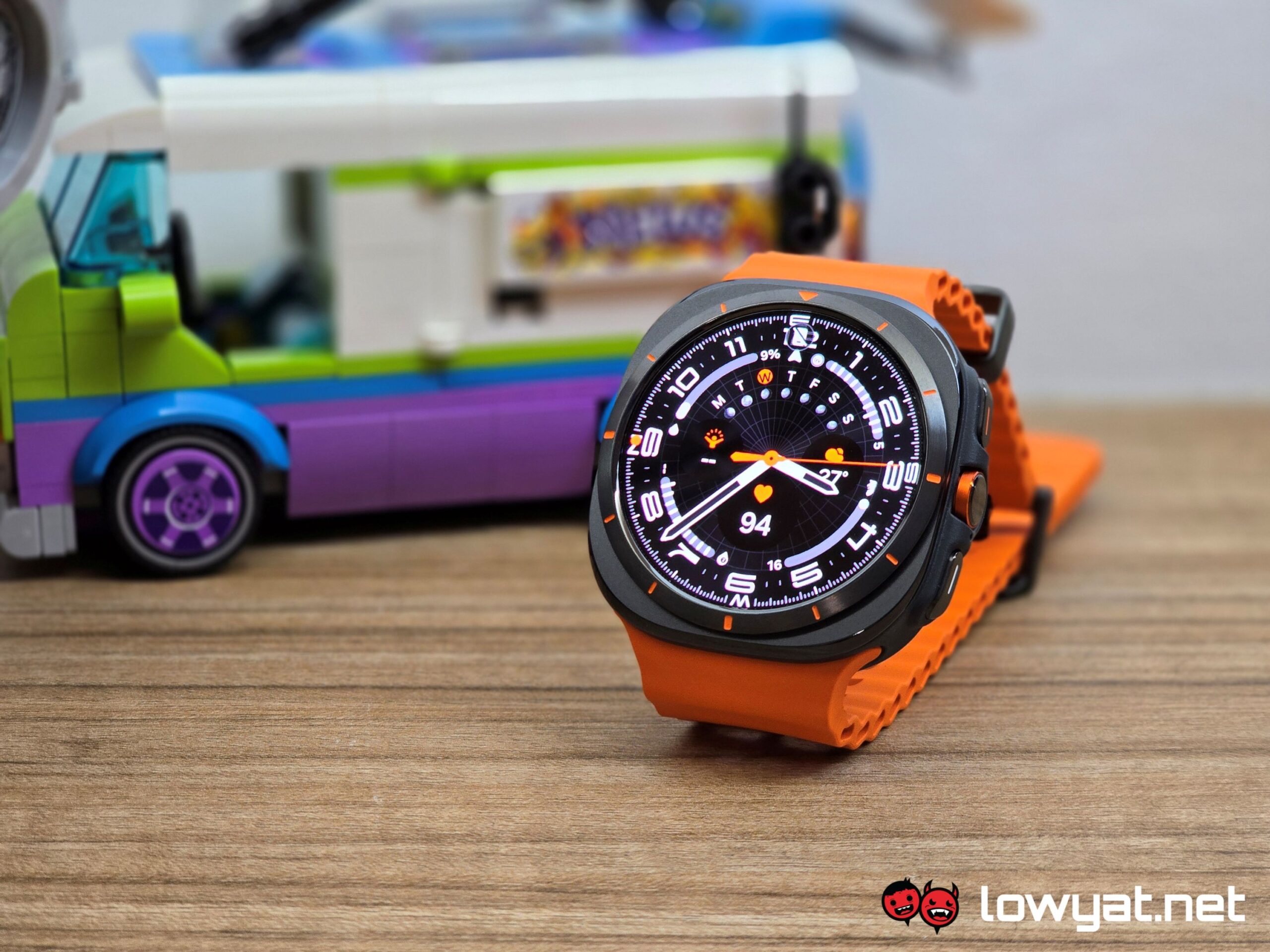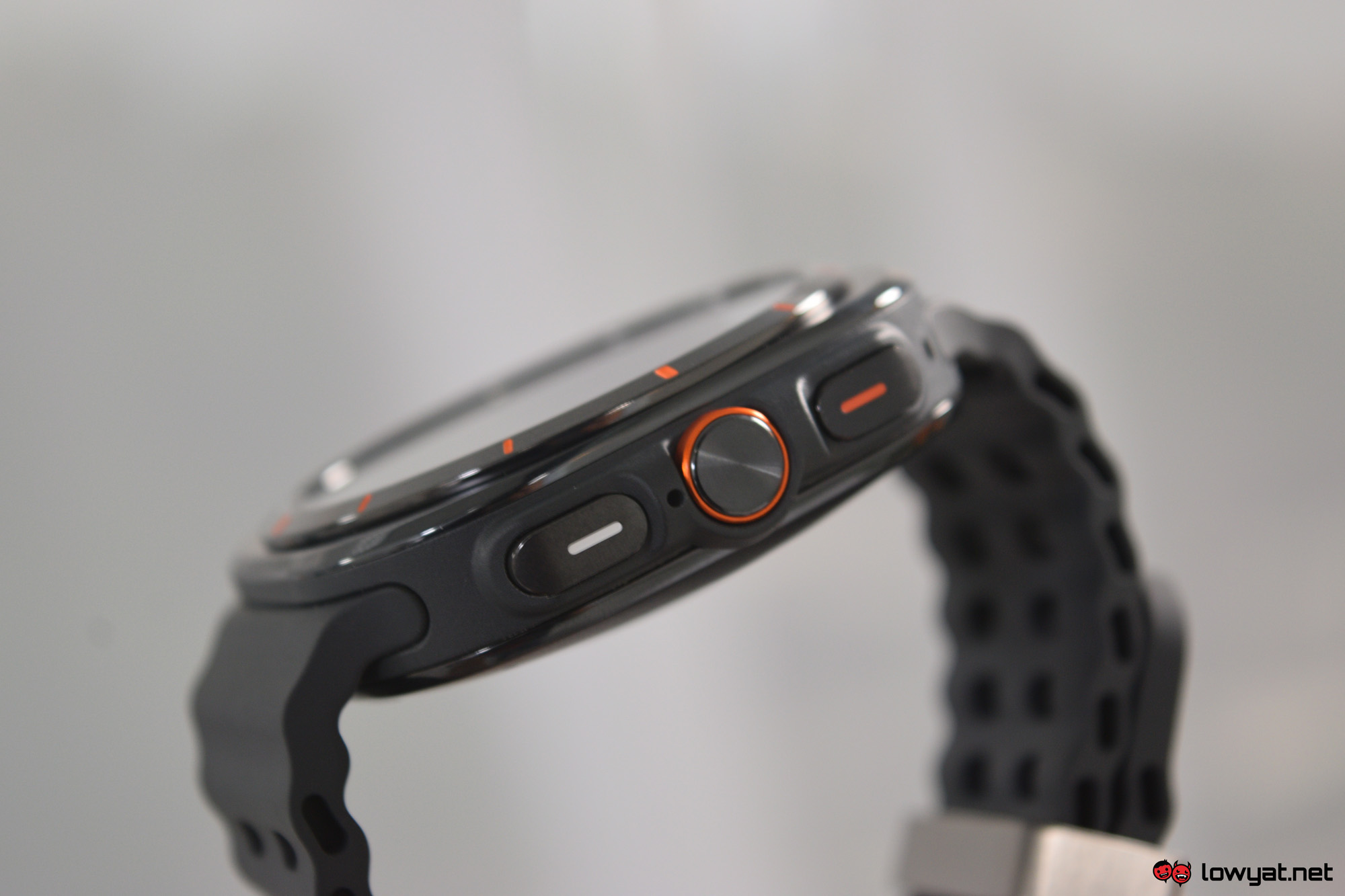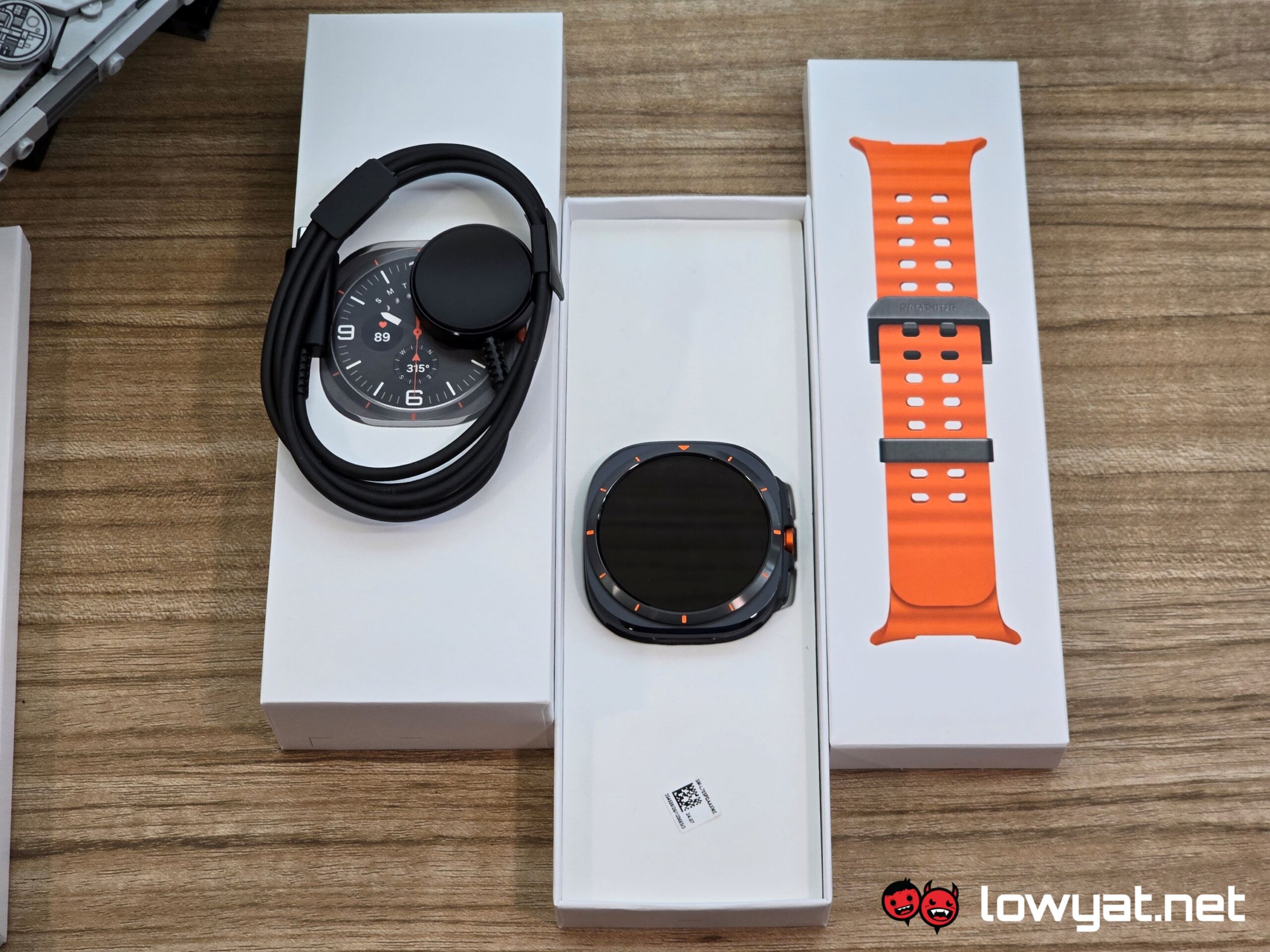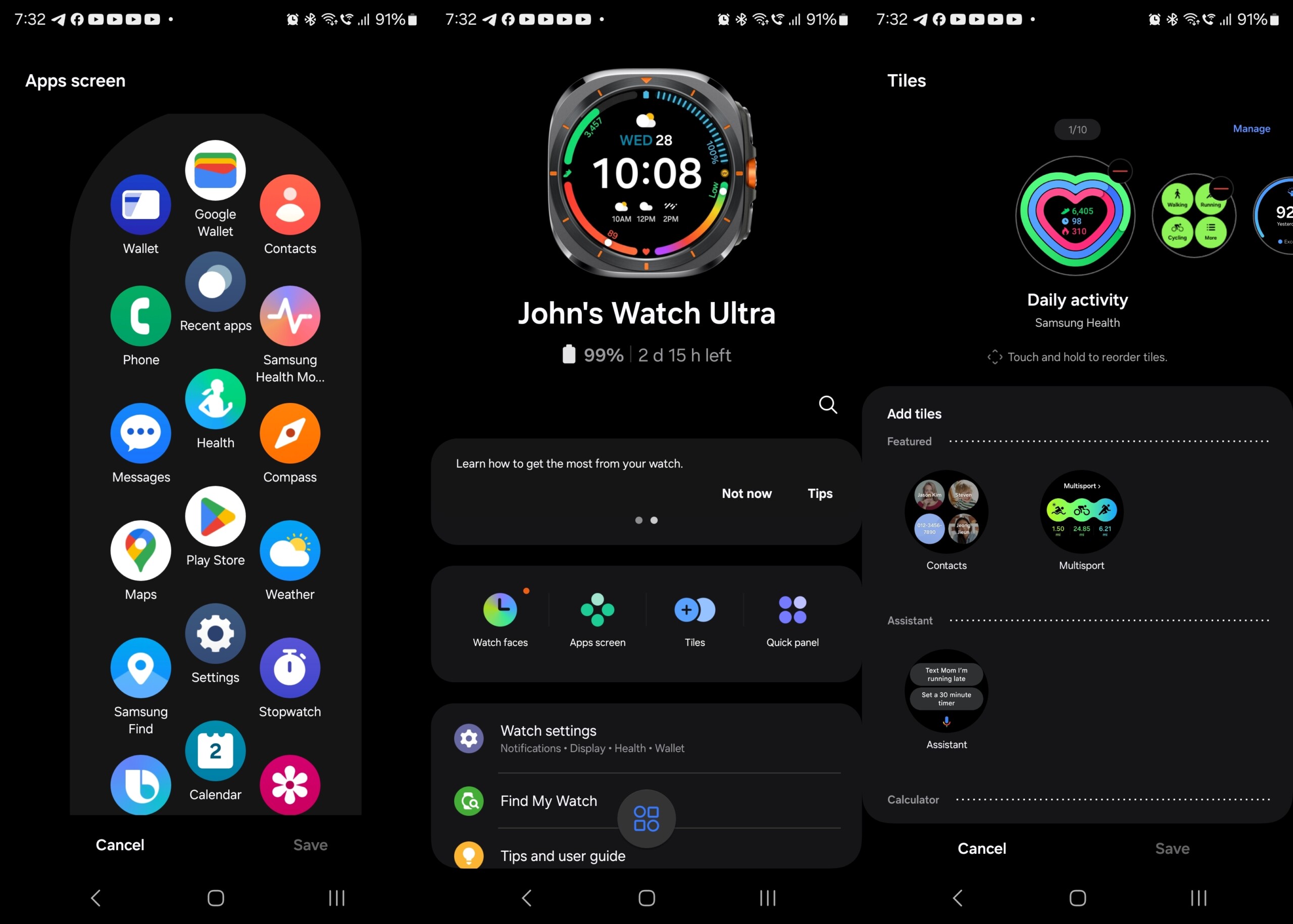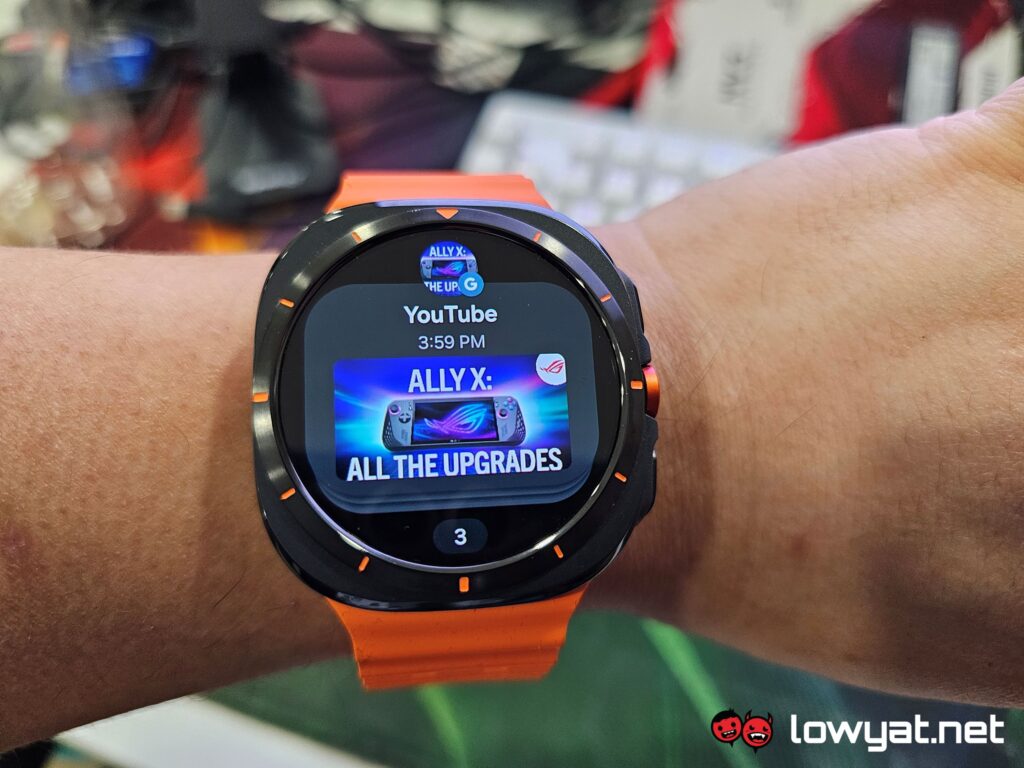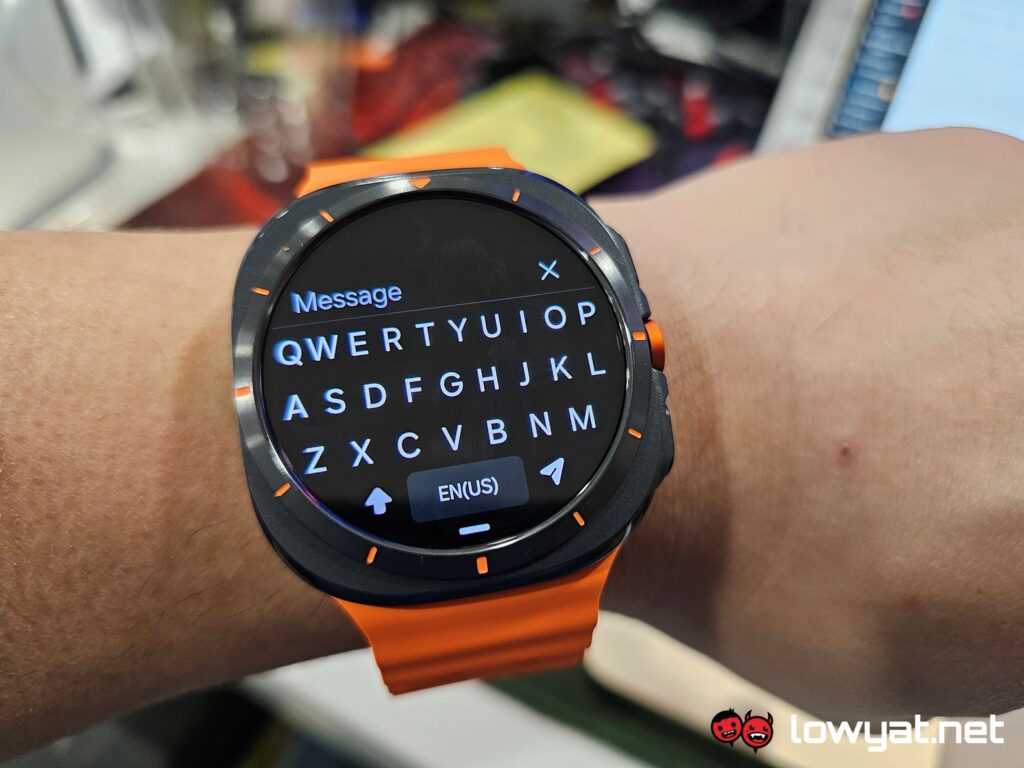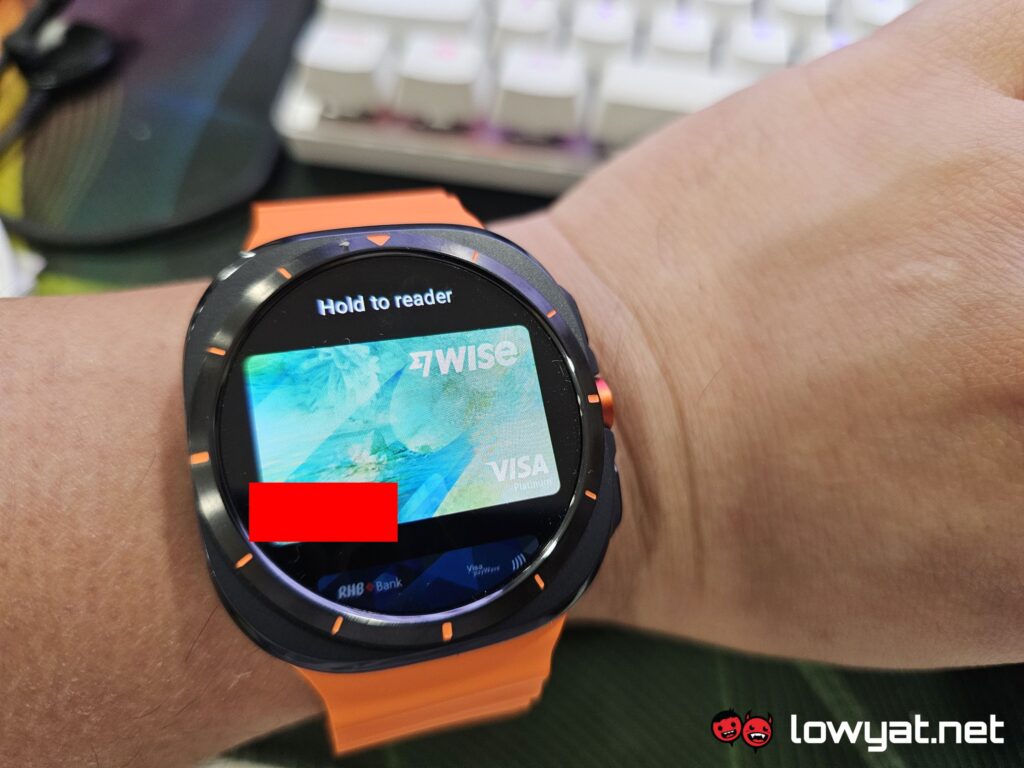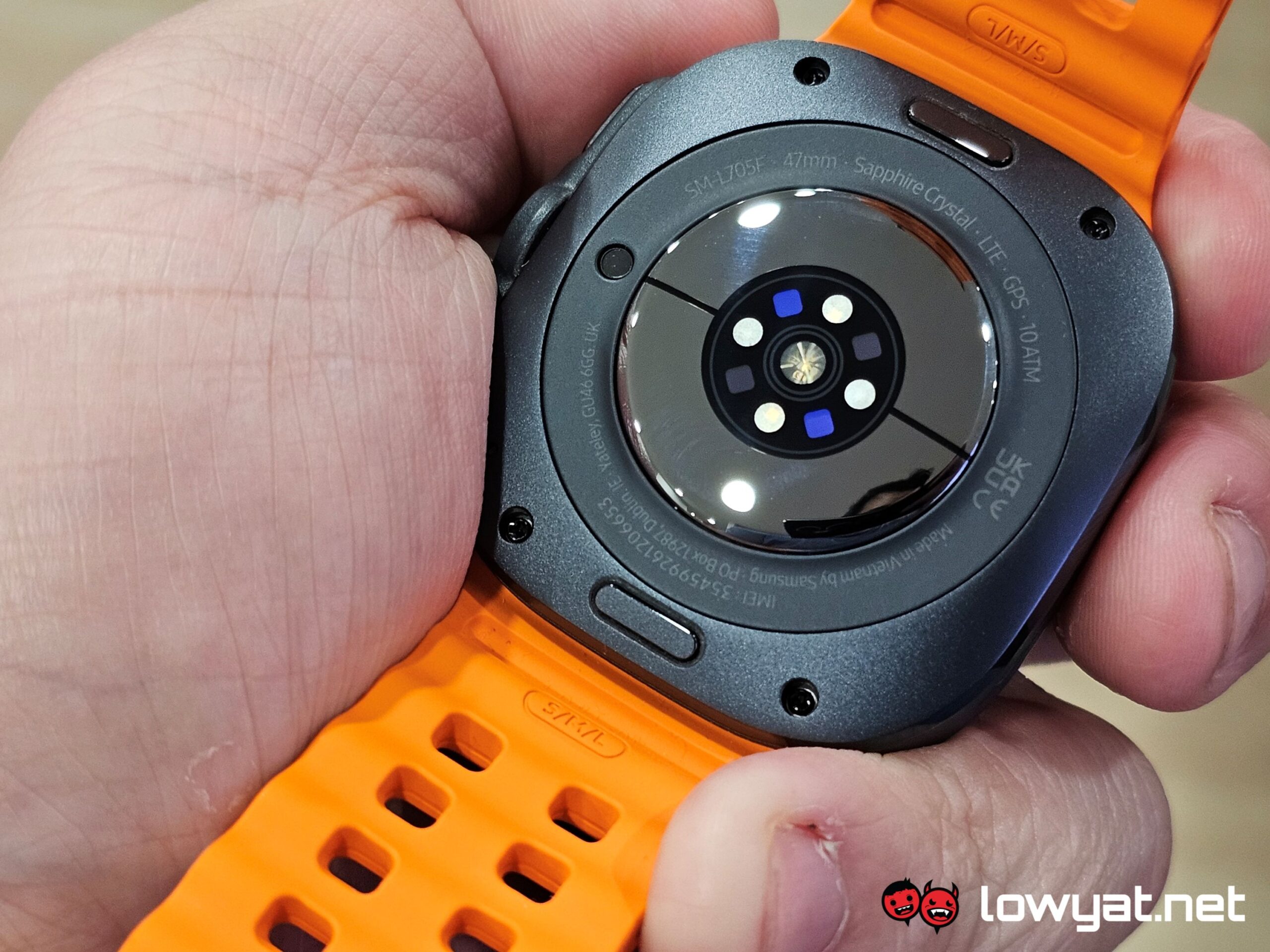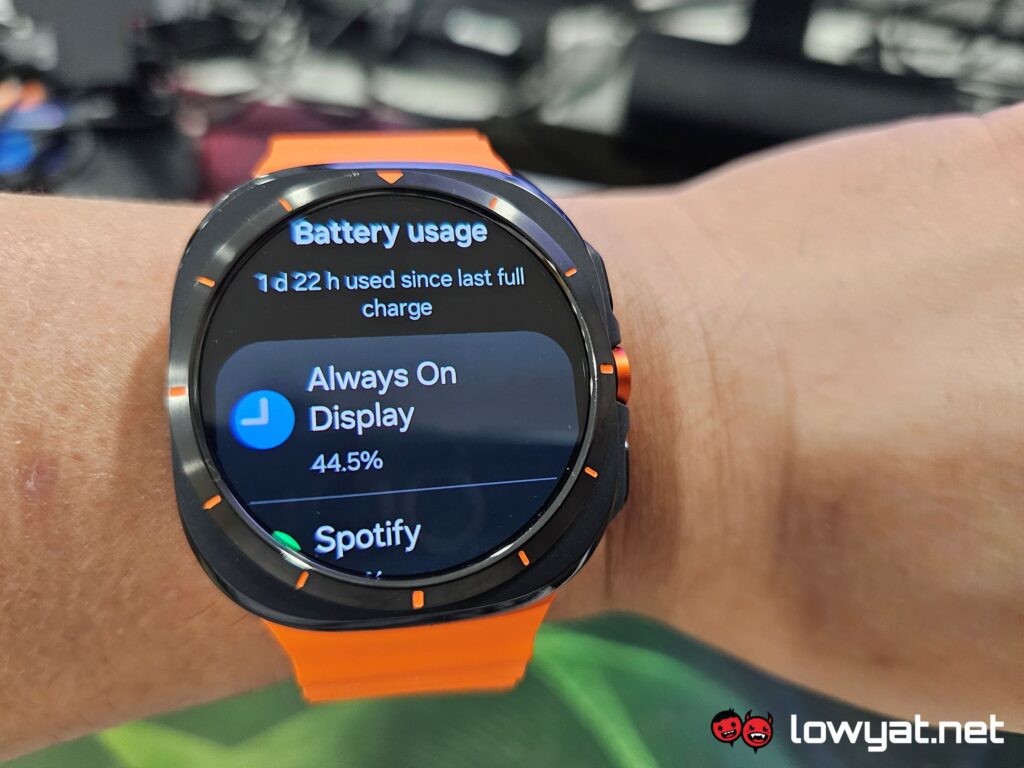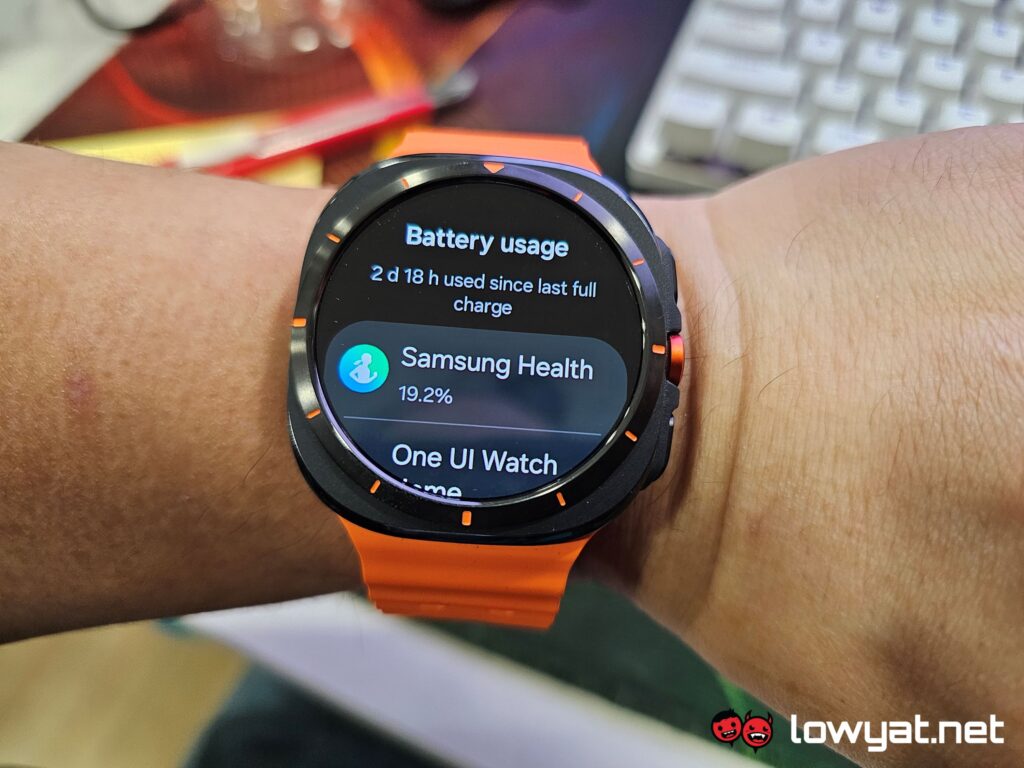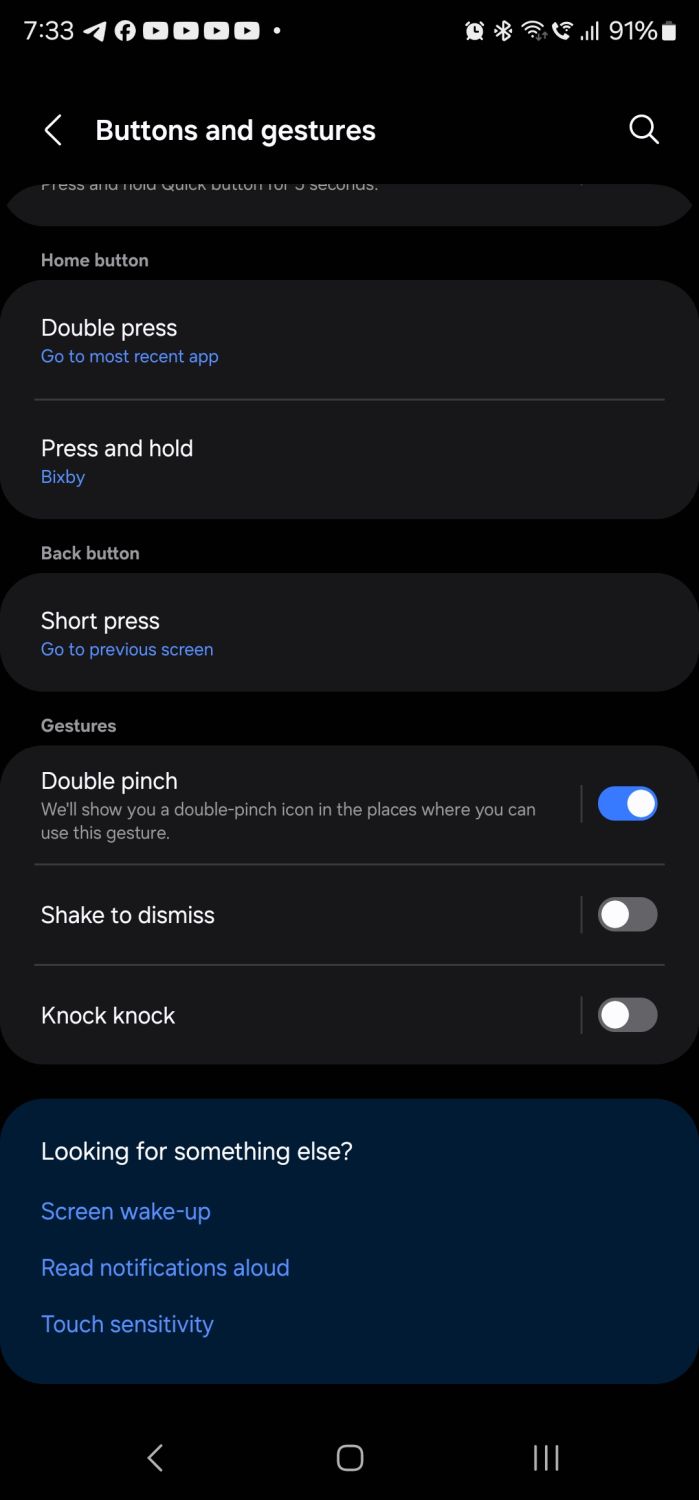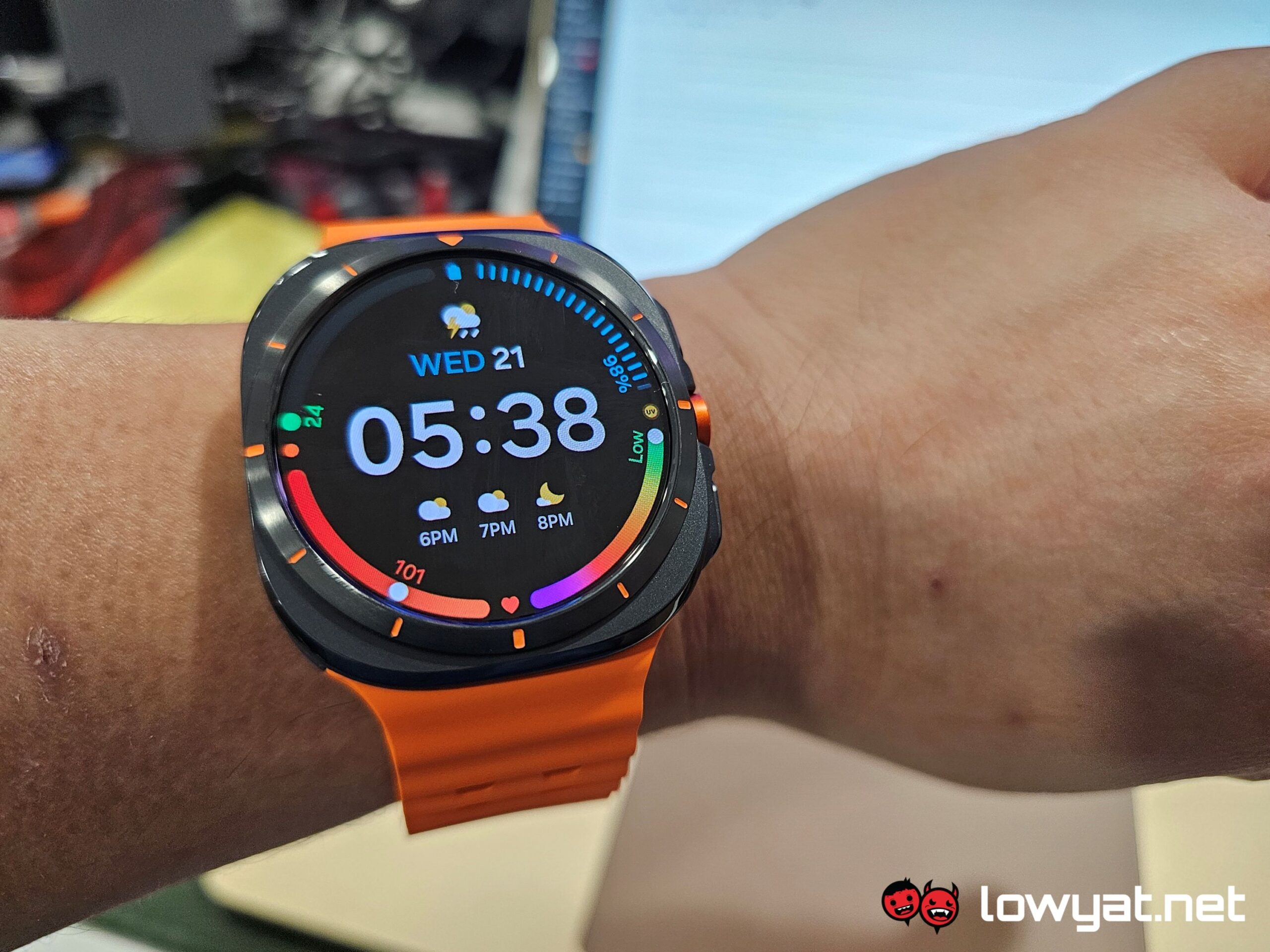The Samsung Galaxy Watch Ultra is, as the brand promised, a wearable that oozes premium and fashion, but is also rugged enough that, should you flash it at someone, they’d at least look at you and go “Damn, now that’s a nice watch. Chunky, but nice”.
But as the saying goes, you should never judge a book by its cover and after having spent some time with it, there is now a rather critical laundry list of this wrist-mounted accessory.
What Am I Looking At?
Beneath the hood, the Galaxy Watch Ultra plays house to Samsung’s 3nm Exynos W1000 SoC and a 590mAh battery. Other specifications include 2GB RAM onboard, as well as an internal storage capacity of 32GB, which is non-expandable.
The watch face has a diametre of 47.4mm (1.5-inches for our empirically-inclined readers) and uses a Super AMOLED Saphire Crystal Glass display, with a resolution of 480 x 480 pixels. Moving on, it also has an IP68 rating and is diving certified for up to 10 ATM, although the most I’ve done with it is just wash my hands and shower with it still on. I don’t recommend the last bit because, if you’re like me, you’re going to have to remove it anyway to dry off the strap.
Like the previous generation of Galaxy Watches, the Watch Ultra run Android Wear OS5 with Samsung’s One UI Watch 6 overlay and yes, it does support Galaxy AI. You also get some staples that most modern wearables come with, including Samsung’s own ECG and Blood Pressure monitor, but you’ll need to download the dedicated Health Monitor App and create an account for it.
What’s Good About It?
One of the plus points of wearing the Watch Ultra is the strap. Compared to other watch straps that I’ve worn, it’s one of the most breathable, which means my (sensitive) skin doesn’t get irritated and the build-up on grime and dead skin is reduced dramatically.
As a Wear OS smartwatch with NFC, this translates into one of the most convenient functionalities for me: being able to conduct cashless payments with just a tap of the smartwatch. Even better, I can alternate between my two dominant digital wallets, Google Pay and Samsung Pay. For another matter, I appreciate that the app drawer can be easily customised via the Wear app on the phone or on the wearable itself.
And like all modern wearables with AI-tuned chips, the Watch Ultra is able to accurately tell when I’m doing a brisk walk and then discreetly start the timer, prompting me in 10-minute intervals, telling me the distance I’ve covered and my current heart rate.
Another one of the party pieces of the Watch Ultra is the Siren Mode. If you press and hold the middle button for nine seconds, it lets out a high-pitch alarm that Samsung says can be heard up to 180m away. Mind you, I’ve never personally tested it myself but I have witnessed it being done by someone else, and by God, it is piercing.
As you’ve also noticed, there’s no physical rotating bezel on the wearable but the (sort of) good news is you can still rotate it by simply running your fingers around the edges of the Watch Ultra’s display. On a related note, I like how notifications now show you what sort of videos YouTube has for me with a thumbnail, rather than just a wall of text. For that matter, it’s great that I can now reply to a message directly via the software integrated digital keyboard. Honestly, it’s something that wasn’t possible several Galaxy Watch generations ago.
What’s The Catch?
An ex-colleague once told me “Every product is perfect, save for one flaw, and that one flaw is different for every product”. In the case of the Watch Ultra, that flaw is its less-than-stellar battery life. On average and with the Display On Mode active, the wearable doesn’t even manage to hit the three-day marker. With the mode turned off, it only lasts slightly longer than three days. Even if you turn on its power-saving mode, you’re only able to extend that life by a handful of hours, assuming you’re doing so after it’s just been fully charged.
Look, I’m not going to mince words here, Samsung: there is no excuse for such poor endurance, especially when you are commanding a whopping RM3,399 and touting it as a wearable for the rugged outdoorsman, let alone the fashionista. The Huawei Watch GT4 was able to last up to 14 days plus change, and that wearable currently retails at less than half the Watch Ultra’s price. And as much as I have tried to avoid making the comparison, it’s battery life is more or less on par with the Apple Watch Ultra 2’s, and that costs a heftier RM3,799.
For the record and just so we’re clear, you can actually extend the battery life to last well beyond two weeks, all you have to do is to switch on the “Watch Only” mode. The problem is, if you’re paying more than RM3,000 with all the bells and whistles – paying using Samsung Pay or Google Wallet, automatically tracking your exercise movements, reading messages without having to take out your phone – and not get to use them, you may as well spend that money on an expensive watch.
And that’s not the end of it. The gesture functions – the double pinch, wrist twist, and double knock – don’t always play nice and despite Samsung saying that it’ll indicate which app can be used with it, it never does. Through living with it, I find out that besides answering and hanging up calls, the double-pinch function in particular also works in playing and pausing songs for Spotify. However, it’s far from flawless and more often than not, the pinches do not register.
Lastly, suppose you’re buying the Watch Ultra for the ECG and Blood Pressure monitor, you will probably need to purchase a Samsung Galaxy phone with it, as their functions seem exclusively operational to the brand, and incompatible with other smartphone brands. But I get it: you need to maintain some sort of exclusivity for your ecosystem.
Should I Buy It?
As someone who’s used every flagship iteration of the Samsung Galaxy S series, using the Galaxy Watch Ultra as a companion accessory and daily driver for literal on-the-go payments is, again, a very unique and convenient experience, especially if you’re just popping in and out of the local Family Mart or 7-11 for a quick drink. Then, as now, I also like how the workout functions spring to life the minute you get into a groove.
But the major oversight of the Watch Ultra, though, is again, battery life. It’s a sticking point that makes the smartwatch a hard sell, even more so with that RM3,399 price tag. It is a truly difficult argument, especially when you consider that Huawei’s own premium smartwatch can boast far superior battery life. Of course, it’s not running on Google’s WearOS, so that technically gives Samsung the upper hand, in that aspect.
Follow us on Instagram, Facebook, Twitter or Telegram for more updates and breaking news.


